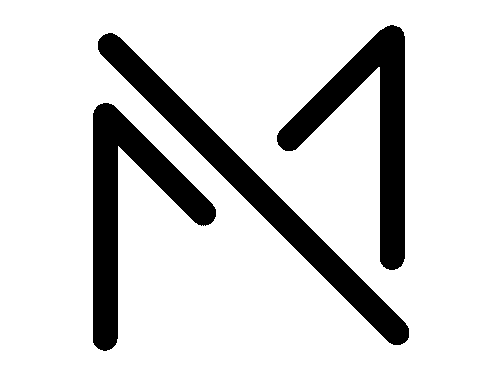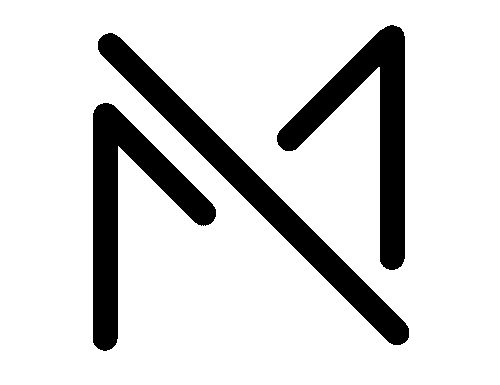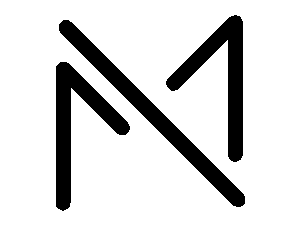A traditional data analyst turns raw signals into insights and recommendations. Marketers Quest (MQ) does the same, but specialized for social and content marketing, baked into your daily workflow, and fast enough to influence what you publish today, not next quarter. Instead of hiring someone to manually pull data, clean it, query it, build dashboards, and write “what to do next,” MQ automates the pipeline end-to-end: collect → clean → analyze → prioritize → recommend → measure → learn. That’s why, for many brands and agencies, Marketers Quest is a practical alternative to a data analyst.
What a data analyst normally handles
A data analyst typically:
- Ingests data from multiple sources (platform APIs, exports, scrapers).
- Cleans and normalizes it (dedupes posts; harmonizes metrics like views, likes, reach).
- Defines KPIs (engagement rate, growth rate, completion rate) and tracks them over time.
- Investigates trends, outliers, “what’s working,” audience reactions, and competitor moves.
- Builds dashboards and monthly decks; proposes next steps and experiments.
That’s valuable, but it’s time-intensive and bottlenecked. MQ makes these steps continuous, programmatic, and instantly actionable.
How Marketers Quest stands in for the analyst
MQ isn’t “a tool that writes captions.” It’s a closed-loop analytics system for social that feeds strategy and creative in real time. Here’s how it maps to analyst responsibilities.
1) Automated data collection and normalization
An analyst spends many hours just pulling data. MQ does it in the background:
- APIs & feeds: Instagram/Facebook (Meta Graph), YouTube, TikTok (where permitted), LinkedIn (where permitted), plus your own performance logs.
- Normalization layer: Unifies metrics so you can compare apples to apples across platforms – e.g., “engagement” is consistently defined; video “completion” is comparable; impressions vs. reach are clearly separated.
- Spam & dedupe filters: Removes duplicates, bot-like anomalies, and low-signal noise so downstream decisions aren’t skewed.
The result: you always have a clean, query-ready dataset without manual CSV work.
2) Clear, consistent KPIs (so you don’t argue about definitions)
Great analysts start with definitions. MQ bakes them in:
- Engagement rate = (likes + comments + shares + saves + retweets) / followers × 100.
- Follower growth rate = (followers_end − followers_start) / followers_start.
- Video health = views, watch-time, completion %, average watch %, replays.
- Posting cadence & consistency = frequency by platform and week, with gaps flagged.
- Hashtag hit-rate = posts using a given tag vs. average engagement for those posts.
- Share of voice (industry) = your brand mentions vs. competitor set over time.
These metrics drive every dashboard, report, and recommendation the same way, week after week.
3) Trend analysis that runs daily (not quarterly)
Analysts dig for “what’s rising.” MQ turns it into a daily radar:
- Region & platform filters: See what’s spiking in India vs. the UK vs. the US, and per platform.
- Velocity thresholds (your rulebook):
- Daily: any hashtag or topic with >1,000 mentions in the last day has high trend potential.
- 3-day: >5,000 mentions across 3 days → trending.
- Weekly: >10,000 mentions in a week → sustained trend.
- Daily: any hashtag or topic with >1,000 mentions in the last day has high trend potential.
- Predictive cues: Sudden slope changes flag emerging trends early; declines warn you to pivot.
A human analyst can do this by hand; MQ does it every morning across regions and platforms, then pushes ideas straight into your calendar.
4) Competitor benchmarking (without a research retainer)
Analysts are often asked, “What are competitors doing?” MQ gives you the readout in seconds:
- Six-brand cluster: 3 “near peers” (slightly bigger than you) + 3 “market leaders.”
- Post-level analysis (last 25): top hooks, formats (reel vs. carousel vs. static), length, posting times, and engagement deltas vs. their baseline.
- Hashtag extraction: The tags that consistently over-perform for them (and the ones that don’t).
- Cadence & ad activity flags: Are they running ads? Did cadence changes affect results?
You get the kind of synthesis a data analyst would put in a monthly deck, updated on demand.
5) Audience & content understanding (topics, entities, sentiment)
Analysts use NLP to structure messy text. MQ brings that to marketing:
- Topic clustering / keywords: Groups posts and comments into themes (“capsule wardrobe,” “workwear,” “festive fits”) so you see which narratives move the needle.
- NER (Named Entity Recognition): Detects products, people, places, and brand mentions to quantify conversation drivers (“linen shirts,” “navy chinos,” “festival season”).
- Sentiment & tone: Positive/neutral/negative split on comments and mentions, with outlier detection to spot micro-crises or viral praise.
This powers content direction and brand health automatically, no custom notebook required.
6) Recommendations, not just dashboards
Analysts translate numbers into next steps. MQ does the same, right where you work:
- Best time to post by platform and segment (based on your data and look-alikes).
- Optimization tips tied to metrics (“Shorten the hook by ~20%,” “Lead with benefit, not feature,” “Swap carousel → 15-sec reel for this theme”).
- Hashtag strategy by region/industry: 20 all-time high performers + “rising” tags tied to your specific post.
- Trending audio (region-aware): pick a sound with momentum, matched with suggested shot lists.
The difference is speed: these suggestions land before you publish, not in a month-end review.
7) Experimentation and learnings captured by design
Analysts love A/B testing; MQ makes it everyday behavior:
- Caption variants (five options by default) → A/B tests are a checkbox, not a project.
- Hook experiments per theme each week; MQ logs which pattern wins in your vertical.
- Cohort comparisons: Compare performance by concept (“style tips” vs. “UGC fits”), format, or seasonality, so you allocate effort where returns are highest.
Instead of one-off tests, you run a continuous series and the insights compound.
8) Reporting you don’t have to build at midnight
Analysts spend huge time on decks. MQ automates them:
- Weekly & monthly PDFs: traffic lights (what worked / what didn’t), wins, lifts, and the next 3 actions to try.
- Client/stakeholder-ready: clean headers, definitions inline, and a simple narrative (“Why this worked,” “What we learned,” “What we’ll do next”).
Because MQ writes directly into your planning tools, the “do next” steps are one click away.
9) Governance: definitions, reproducibility, and audit trail
A good analyst enforces data discipline. MQ enforces it for you:
- Single source of truth for metric definitions and transformations.
- Reproducible queries for dashboards and exports, no “mystery spreadsheet.”
- Audit trail: who generated what, which filters were applied, when a dataset was refreshed.
- Data retention controls (e.g., 6/12/36 months by tier) so storage and privacy are managed.
That means fewer debates about “whose numbers are right.”
10) Speed, cost, and scale (why this is an alternative)
- Speed: MQ pulls, cleans, analyzes, and recommends in near real time. You don’t queue for a report.
- Cost: Token-level costs for analysis and generation are tiny relative to a human analyst’s hours; dashboards and reports incur no incremental labor.
- Scale: You can run this for one brand or fifty without multiplying analyst headcount.
If your marketing relies on weekly shipping and fast learning, MQ gives you analyst-level capability at software speed.
What this looks like in practice (menswear brand example)
Scenario: Small menswear brand operating in the UK and US.
Monday a.m. – Insight pass
- Trend analysis highlights spikes in “capsule wardrobe,” “soft tailoring,” and “office to evening” transitions in the UK; “fall fits,” “layering,” and “Chelsea boots” in the US.
- Hashtag research ranks UK tags (#capsulewardrobe, #workwearstyle) and US tags (#fallfits, #menslayering) with velocity flags (daily / 3-day / weekly thresholds).
- Competitor scan shows three peers over-indexing on short reels with tight hooks; saves and shares drive the lift.
Monday noon – Plan
- The AI Social Media Calendar builds a week: 2 reels + 1 carousel + 1 static per region. Hooks map to the above themes and recommended posting times.
- For each post, MQ proposes 5 caption variants, hashtag sets, and Reel/Video direction (shot list + transitions + on-screen text).
Mid-week – Execution & tests
- You run two A/B hook tests on reels; MQ logs performance and updates “winning hook patterns” for menswear in your Brand Profile.
- Trending audio picks for each region are applied; the shot list adapts to pacing.
Friday – Learn
- Auto-generated weekly PDF summarizes: UK reels with “3 ways to…” hooks beat story-style intros by +18% saves; US “fall fits” with “before/after” transitions over-index on shares. MQ suggests: raise reel frequency next week; trim first line copy by ~20%; try 2-line on-screen captions early.
An analyst could deliver this, but MQ makes it your default operating rhythm.
Where you still want a human data analyst
MQ covers 70–90% of recurring analyst work for social/content. A human analyst still adds unique value when you need:
- Custom attribution modeling across ads, email, site analytics, and offline.
- Deep causal analysis (e.g., MMM, uplift modeling) and advanced statistical design for high-stakes experiments.
- Bespoke BI that merges multiple business systems (inventory, POS, LTV cohorts) with content performance.
The good news: MQ gives that analyst a head start, clean social data, ready-made taxonomies (topics/entities), and a living backlog of hypotheses to test.
Why this matters for leadership
Leaders ask three questions every week:
- What’s working (and why)?
- What should we make next week?
- How do we improve outcomes without hiring another team?
Marketers Quest answers all three continuously. You get the insights of a data analyst, the speed of automation, and outputs that are already wired into production (the calendar, the captions, the creative direction). That’s the critical difference: MQ doesn’t hand you a pretty chart and walk away; it turns analysis into action inside the same system, then measures what happened and learns from it.
The bottom line
A data analyst transforms noise into decisions. Marketers Quest does the same job for social and content marketing, automating ingestion, normalizing metrics, detecting trends, benchmarking competitors, modeling audience responses, recommending next actions, and reporting results. Because it’s built as a loop with your planner, caption generator, visual creator, and scheduler, the distance from insight → published post → learning shrinks to hours. For startups, lean teams, and agencies that must ship high-performing content every week, that makes Marketers Quest a credible, scalable alternative to hiring a dedicated data analyst, while still leaving room to bring in human specialists for advanced analytics and cross-channel modeling when you truly need them.












